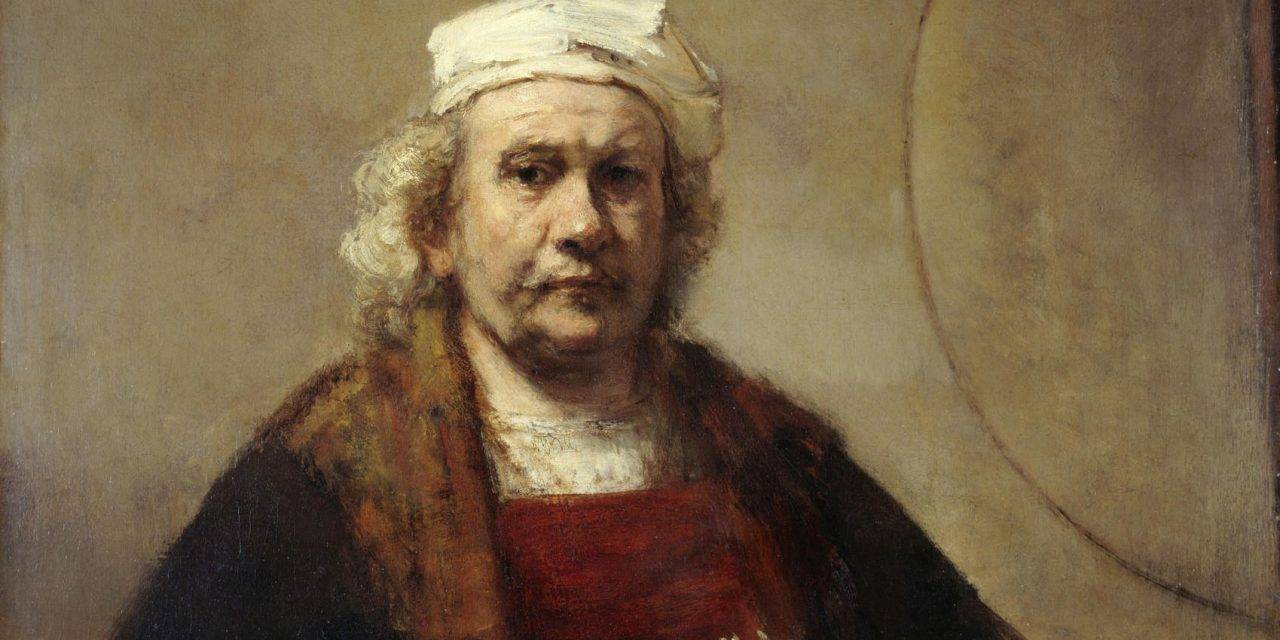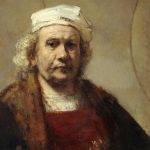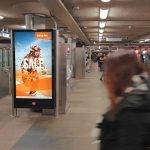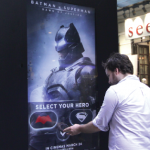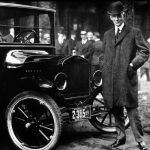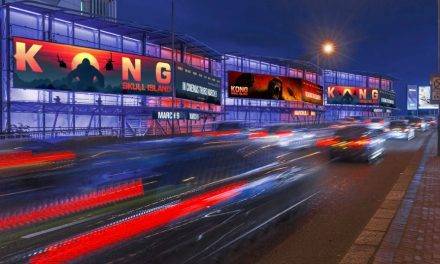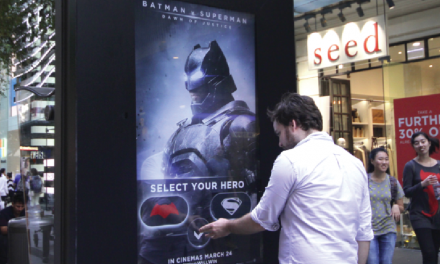The ‘Late Rembrandt’ exhibition in the Rijksmuseum is seen as the cultural highlight of 2015. Over a hundred works from various (private) collections worldwide were brought together to form this one-off collection. Just as unique was the ‘digital case’ that was rolled out around the exhibition to which CS Digital Media made an important contribution. What is it that made this digital DOOH campaign so special and distinctive? A reconstructive analysis consisting of five elements: concept, media mix, creation, production and results.
Rembrandt for everyone
The Rembrandt campaign for the Rijksmuseum and KPN was a collaboration by various media companies. From online to offline. From the Online Company to CS Digital Media. All these diverse concepts were in the interests of achieving the overriding objective: making Rembrandt accessible to the whole of the Netherlands.
In the Rijksmuseum it was remarkably calm at the end of 2014, beginning 2015. Behind the scenes, however, a lot of hard work was being undertaken. And not only on a conventional museum display of paintings, drawings and etchings that the master had produced between approximately 1652 and 1669. The ‘Late Rembrandt’ embraced several ‘layers’ of objectives and principles in which several parties were involved.
First and foremost were the Rijks and main sponsor KPN itself. In addition, agencies such as Mindshare and Kinetic (for the planning of regular media, TV, radio and print campaigns), the Online Company and not least MyAdbooker and CS Digital Media were all active. These parties were responsible for the development of a ‘smart mix’ of innovative, digital technology (offline and online) with state-of-the-art creations and programmatic marketing (the activation of virtual guided tours on the CS Digital Media screens). And this would eventually result in on the one hand an ultimate illustration of how a successful video campaign can and should be executed, and on the other hand a demonstration of how divergent disciplines (creative, sales, marketing, traffic) complement and strengthen each other.
‘The overriding objective of the campaign was to have KPN as main sponsor of the Rijksmuseum and make the Late Rembrandt exhibition accessible to everyone’, says CS Digital Media CEO Radjen van Wilsem. ‘To that end CSDM has used the public transport networks at the metro stations in Amsterdam and Rotterdam. With a digital art gallery we aimed to raise “awareness” and, combined with the Etsy app we developed, add an interactive element to the campaign. ‘From concept to media mix we have been involved in the campaign’
And not unimportantly: both concepts could be deployed online – as viral – providing an even greater audience exposure to the exhibition. For our company it was unique that we have been able to implement this campaign “full service”, i.e. we were involved in both the concept and compilation of the media mix. And that within that media mix, we could moreover apply a new purchasing method of programmatic buying.’
From sponsored stories to interactive, virtual tour
The Rembrandt campaign stood out mainly because of its multifaceted and integrated use of various media. The press paid special attention to the innovative elements of the campaign, such as the activation of the virtual guided tours on the CS Digital Media digital screens via MyAdbooker. But more elements really stood out.
The campaign slogan ‘there is so much more than the Night Watch’ suggested there was much more to be discovered behind the ‘physical’ exhibition. Central to this was a special KPN-Rembrandt website. An integrated media approach primarily aimed at traffic generation was chosen to support this. The exhibition received additional attention via social media content on Facebook and Twitter, generating many clicks to the site. The site then provided an in-depth look at the exhibition with, for example, guided tours by well-known Dutch celebrities such as André Kuipers and Sophie Hilbrand, and through X-ray applications with which visitors, with just one mouse click, could discover the painting behind the painting – in Rembrandt’s time the canvases were often repainted to save costs.
These and other online activities (from take-overs and sponsored stories to interactive, virtual tours for tablet and smartphone) fit together seamlessly in the sense that all elements were directly related to Rembrandt’s works and supported by offline activities. TV programme DWDD paid attention to Late Rembrandt, there were TV and radio commercials with the aforementioned celebrities, adverts in national and regional newspapers and on billboards and there was a special edition of RTL Late Night from the epicentre of the whole campaign, i.e. the Rijksmuseum itself. Without ever taking the spotlight away from the Night Watch!
And finally there were Rembrandt canal cruises, Rembrandt walks, Rembrandt lectures, Rembrandt workshops and even Rembrandt painting classes. The exhibition itself sold out incredibly fast with a record number of visitors at 520,698, but due to the online and offline availability no Dutchman had to miss Rembrandt even in a relatively short period (12 – 17 May). Statistics show this was not the case.
‘For the first time a new generation could become acquainted with the best work of one of the greatest painters the Netherlands has ever known,’ stated the then Rijks director Wim Pijbes. Mark Versteegen, Head of Sponsoring KPN, agreed by commenting that KPN ‘with the ICT knowledge and digital techniques had brought Late Rembrandt even more to life. The whole of the Netherlands could enjoy Rembrandt’s art. As sponsor we really added something to the experience of this exceptional exhibition.’ Versteegen stressed that sponsoring not only consists of financial support. But that in particular knowledge and technology support the ambitions of the museum. ‘So that museum guides use iPads during their guided tours and visitors find iPads at specific points in the collection with additional information about art works. Moreover, the much-praised Rijksmuseum website is hosted by KPN (…) Less visible, but just as important is a large number of innovative products the KPN provides in the fields of telephony, data traffic and data storage. This is how we help to realize the Rijksmuseum’s strategy to be an innovative, state-of-the-art cultural institute for the world.’
The trade press, although often (justifiably) critical, fully agreed. On 20th March John Goedegebuure wrote on the Marketingfacts website ‘that corporate sponsorship can be much more than bluntly promoting the product portfolio of a sponsor is proven by KPN as Rijksmuseum’s main sponsorship of the Late Rembrandt exhibition with a diversity of input. The way this unique one-off exhibition has been made accessible to the entire Dutch population and what’s more, the rest of the world, and is subtly confronted with the ‘masterful’ opportunities offered by our ‘fantastic country’ (freely quoting Prime Minister Rutte). Innovative elements regularly mentioned by the press were the activation of the virtual guided tours on the CSDM screens by MyAdbooker and the animated works created in the CSDM studio.
 Animations bringing Rembrandt to life
Animations bringing Rembrandt to life
CS Digital Media ‘opened up’ twelve Rembrandt masterpieces to seventy digital media points in Rotterdam and Amsterdam. This was achieved using subtle animations. How did they go about it? What was the starting point?
In the CS Digital Media creation studio there was an almost serene atmosphere at the start of this exceptional ‘tour de force’. Entirely in the style of the project no hip-hop (OK, occasionally a pizza and a cap slipped through) but Vivaldi and focused looks. On 27-inch screens images of paintings such as ‘The Sampling Officials’, ‘Portrait of Frederik Rihel on Horseback’ and ‘Titus at his Desk’ were flashed. ‘We could have simply and easily ‘stuck’ some Rembrandt paintings on screens like static posters.’ But that would have negated the attention value, the ‘stopping power’. We know that the dynamics of video add value and result in more attention than a static image. But it’s true that we were starting something that had never been achieved on this scale before.’ says CSDM art director Sebastiaan Hendriks. ‘Provide twelve paintings of the great master Rembrandt with subtle animation, subsequently to be admired on 70 digital media screens in Amsterdam and Rotterdam metro stations, as well as on a special website. We had made a digital art gallery before, but this was, due to the linked extra applications, so much more. And mind you this is Rembrandt, the greatest Dutch master of the seventeenth century. He would not be turning in his grave if he saw the results.’
The first ‘layers’ are drawn with innumerable points around the persons in the paintings and activated on a timeline, in order to add minimal but tasteful animation to the works. You see a Sample Official fluently, slowly and gently turn the page of a book. You see in the 1633 painting of Frederick Rihel on Horseback how the horse subtly flexes its legs. How, after a dramatic and tense build-up, the Batavians under Claudius Civilis finally cross swords. And do not forget the severe and penetrating gaze of Rembrandt’s self-portrait with two circles which culminates in a friendly wink.
Hendriks: ‘With our animations we wanted to remain as close as possible to the essence of the work. No cacophony or conga line of movements or other extreme additions. We didn’t use real time movement, but just slow motion to emphasize the mystery of Rembrandt’s paintings. Very time-consuming, indeed, but with great results. I have to admit, however, that it was harder than first expected. This is because a few years before this project we had already animated a series of art works for the Rijks. The ‘Still Life with Flowers in a Glass Vase’ by Jan Davidsz de Heem and the ‘Milkmaid’ by Johannes Vermeer to mention a couple. The major difference between these works and those of the Late Rembrandt exhibition was that they are very detailed whereas Rembrandt’s are not. Rembrandt’s works were often rough; an eye, for example, was a rough stripe, and that is much more difficult to animate, without turning it into something cartoony which was precisely what we were trying to avoid.’ Anyhow, exaggerating a little and looking through your eyelashes, the words of the famous pop art artist David Hockney are applicable here when describing how a modern-day viewer sees the Rembrandt drawing, a family portrait depicting a child learning to walk: ‘The trace of Rembrandt’s hand is still alive. Your eye can go back and forth between brown ink: (…) How rewarding this is, to move from the physical surface of the paper to its disappearance when you read the “subject”, and then back again. How many marvelous layers does this drawing have?’
The gist of Hockney’s message? ‘Part of the alchemy of art (is), how an artist can transform one thing into another.’ And in this case that can also be said of the professional animations that were created in the CSDM studio – possibly the most striking part of the campaign, without denigrating other, equally relevant, aspects.
The fact remains that millions of travellers who would not normally be likely to visit the Rijks and had perhaps never seen a real Rembrandt, were confronted, outside of the museum at metro stations, with the beauty of the old master in a modern way. And even, as the post campaign analysis and results of this case would prove, be stimulated by these animations to visit the Rijks.
 How to give Digital Out of Home ‘Stopping Power’?
How to give Digital Out of Home ‘Stopping Power’?
Digital Out Of Home is a medium that needs to capture the attention of viewers in a split second. But how do you do that? What are the do’s and don’ts?
The attention being paid to the animation can be attributed to the fact that the CSDM studio, as a result of many years of experience, are well aware of a number of elements that specifically apply to DOOH screens and are crucial for a successful video campaign. Hendriks discusses the most important ones. ‘Some principles sound like gigantic opening doors, but in practice you see that many of them are completely ignored because of for example incorrect use of colour, wrong dynamics (too busy, too insistent) or generally weak footage. Compare this to a journalist who reveals the news at the end of a 3000-word article. He knows that he is supposed to do this at the beginning, but assumes that the reader will continue reading anyway. No way. This more or less applies to DOOH too. Before you know it, you have lost the viewer.
As far as visuals are concerned: less is more. Preferably one all-encompassing image to deliver the message in one go, which has to be “monumentally”’ compelling. Nothing fussy that we see 2500 times a day. You have to be one of the 75 that are actually retained. And that also depends of course on the quality of the image. Avoid the rubbish used on social sites or from stock libraries. They are interchangeable and therefore inconspicuous. Just like colours that confuse viewers rather than keep them interested. Colours carry a message: red = attack. Make sure that the colour fits the message or brand.’
‘Just as disturbing is movement that is so fast that it not only makes you lose focus on the advertising message, but also distorts the consumer recognition. Images flash past; you don’t know what you see and the viewers are gone, whereas you need to grab them in a split second. Anyone who walks past a screen at a metro station should see at first glance what it is about, what brand it is, what message is promoted and by whom. A classic DOOH mistake, by the way, is going ahead with online video. The rhythm, structure and time frame are totally out of line with DOOH. At home on the couch is a very different situation than at a station. Often busy and extremely noisy. Talking heads on screen? You cannot hear what they’re saying. DOOH is still usually without sound. A talking person raises questions and irritations.’
‘A campaign is reinforced if it is location-based, if it is in line with the architecture of the surroundings, figuratively but occasionally literally. On the screen you can refer to objects near the screen. This ensures the so-called shock of recognition. The last point I’d like to draw attention to is the amount of screen interactivity. Swiping, touch screens, gestured-based gaming, you name it. They enhance the viewers’ engagement with the screen and make them stay longer. Especially if there’s a prize on the line. Yes, we continually took all these matters into account with Rembrandt.’ Although it is not possible to establish a linear causal relationship between the advertising message and the attention value, the Rembrandt figures speak volumes. ‘The public gave the media screens an average of 7.8 for prominence and sympathy. The campaign further had an out of home media reach of 15.5 million contacts’, says Van Wilsem. ‘And the animations went viral. Within two weeks they were viewed one million times in 163 countries and 200,000 shared via social media. Making an #Etsy also appealed: 4251 photos were collected on the website.’
What the figures say about the objective
A campaign can clearly not be considered to be successful without positive, quantifiable results. What were the most significant findings of the research?
KPN and the Rijks achieved excellent results with the campaign. The campaign’s creative, integrated media approach and the corresponding call to action ensured that the site was visited 563,026 times. Average visiting time: 3.38 minutes! The awareness of KPN as the museum’s main sponsor increased by as much as 20%. The core message of the campaign was effectively brought to the attention of 83% of the Dutch population; 63% thought it was ‘credible’ and 45% ‘relevant’. A positive effect was measurable among KPN customers as well. Customers visiting the exclusive late-night opening of the Rijks remained customers longer. In fact, the number of customers leaving decreased by 33%.
In the Rijks itself it was absolute bedlam during the exhibition: 520,698 visitors. However, in spite of the crowds, Late Rembrandt was given a high report card grade of 8. It was striking that visitor analysis showed 54% were first-time Rijks visitors and many of these were young people. These figures demonstrate that the objective of both the Rijks and KPN, to generate attention for one of the greatest artists of our country, was comfortably met.
Post Scriptum
Although Rembrandt was in his time famous and yet often destitute, he was certainly not uncontroversial. Clients regularly brought a work back because they thought the work wasn’t ‘finished’ yet. He also enthusiastically experimented, especially in his self-portraits, with lines and light. He scratched the paint with the blunt end of his brush, put blobs of paint on the canvas which almost created a 3D effect.
Drawing an analogy between Rembrandt and DOOH is hard, but his – sometimes risky – striving for renewal is something that DOOH in general could take on board. ‘Practice what you know, and it will help to make clear what you do not yet know’, is one of Rembrandt’s saying noted down by an apprentice. In that light, the Rembrandt case can be considered to be a valuable beginning that demands more.

